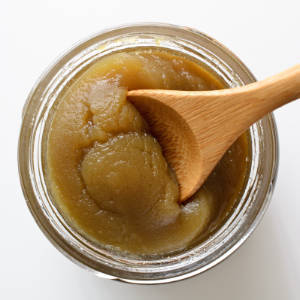Accompaniments Category

Includes condiments, pickles, and olives
caper berry
Caper berries are large capers. They're sometimes used instead of green olives to garnish martinis.
Learn morecapers
Capers are pickled flower buds, and very salty. You can get them pickled in brine (top photo) or salted (bottom). Look for them in the pickle section of your grocery store, or in delis. The smallest ones are more expensive, and more highly esteemed. Rinse them before using.
Learn morecarnation
Carnations have a peppery flavor. While they're edible, some people may have an allergic reaction to them.
Learn moreCerignola olives
These sweet Italian olives are large enough to stuff. Black Cerignolas are softer than green Cerignolas.
Learn morechee hou sauce
This braising sauce is made from soybeans, garlic, and ginger. Look for it in the condiments section of Asian markets
Learn morechile paste
This is a blend of hot chile peppers, garlic, oil, and salt that's commonly used in Asian cuisine. Includes: Chinese chile (or chili) paste = Szechuan chile (or chili) paste = Sichuan chile (or chili) paste = chile paste with garlic, Korean chile paste, and Vietnamese chile paste = tuong ot toi Vietnam = prik kaeng, which is hotter than the Chinese chile paste. See also separate entries for these other chile pastes: nam prik pao, chile bean paste, sambal oelek, and sambal bajak.
Learn morechili bean paste
This reddish-brown sauce is made from fermented soybeans and hot chilies. It's very hot.
Learn moreChinese pickle
includes preserved Sichuan mustard greens, preserved Sichuan kohlrabi, snow pickle = red-in-snow, and salted cabbage = winter pickle.
Learn morecloudberry preserves
These preserves are sweet and somewhat mild. Look for them in Scandinavian markets.
Learn morecoconut egg jam
Southeast Asians spread this exquisite jam on toast, but it would also be great on ice cream. Look for small cans of it in Asian markets. Visit the Coconut Egg Jam recipe page, or the Kaya, Traditional Coconut Jam page.
Learn morecorn husks
Hispanic cooks use these, both fresh and dried, to wrap tamales before steaming them. Before using, soak the husks in hot water for about 30 minutes to make them more pliable.
Learn morecorn tortilla
These thin round wraps are widely used in southern Mexico, and they're the preferred tortilla for making tacos and enchiladas. They should be served hot. If you're watching calories, do this by cooking them on a hot, dry frying pan or by wrapping them in moist paper towels and briefly heating them in a microwave oven. If calories aren't an issue, fry them in oil. You can make corn tortillas at home if you have a tortilla press. Just mix masa harina with enough water to make a bread-like dough, press the dough until it's very thin, and then cook the tortilla in a hot, dry frying pan. Readymade corn tortillas are available in most supermarkets.
Learn morecornichon
This is a small pickle that's flavored with dill, tarragon, and other herbs and spices. It's a heavenly accompaniment to pâté.
Learn morecracked Provencal
These aromatic green olives are marinated in a solution with herbes de Provence.
Learn morecranberry sauce
This is a classic accompaniment to Thanksgiving and Christmas dinners. It's made of cranberries that have been cooked with sugar and other flavorings, like orange zest, ginger, port, or maple syrup.
Learn morecrystallized ginger
This is fresh ginger that has been cooked in a sugar solution and then coated with sugar. It's similar to candied ginger, and the two are often used interchangeably.
Learn moredianthus
These have a clove-like flavor. Some people may have an alergic reaction to dianthus.
Learn moreDijon mustard
Grey Poupon and French's are well-regarded brands. See the Dijon Mustard recipe posting on Recipesource.com.
Learn moredumpling wrappers
These thin round wrappers are used to make the delicate dumplings that are so popular at dim sum restaurants. They're made to be stuffed and steamed, but they're not sturdy enough to be fried. While assembling the dumplings, keep the stack of wrappers moist by covering them with a damp towel. You can seal the dumplings with a "glue" made with cornstarch and water. Look for fresh or frozen wrappers in Asian markets. Store them in the refrigerator or freezer, but let them come to room temperature before using.
Learn moreegg roll wrapers
The Chinese use these dough squares to make deep-fried egg rolls. While assembling the egg rolls, keep the stack of wrappers moist by covering them with a damp towel. You can seal the rolls with a "glue" made with cornstarch and water. Look for fresh wrappers in Asian markets and many supermarkets. Store them in the refrigerator or freezer, but let them come to room temperature before using.
Learn moreempanada wrappers
Hispanic cooks wrap these six-inch diameter rounds of dough around sweet or savory fillings, and then bake or fry them. Look for them among the frozen foods in Hispanic markets.
Learn more




































































































































































































































































































































































